L'analyse de rentabilisation des vêtements de sport durables: répondre à la demande des consommateurs & Améliorer la valeur de la marque?
Les préoccupations environnementales stimulent de plus en plus les décisions d'achat des consommateurs. Les marques qui ignorent la durabilité risquent de perdre des parts de marché à des concurrents plus conscients, en particulier dans la catégorie des vêtements de sport où la connexion avec la nature et le bien-être est primordiale.
Les vêtements de sport durables représentent à la fois un impératif environnemental et une opportunité commerciale. 67% des consommateurs tiennent compte de la durabilité lors de l'achat de vêtements de sport et 73% sont prêts à payer plus pour des produits durables. Les marques qui intègrent des matériaux recyclés, du coton biologique ou des tissus biodégradables peuvent commander des prix premium tout en attirant des consommateurs conscients.
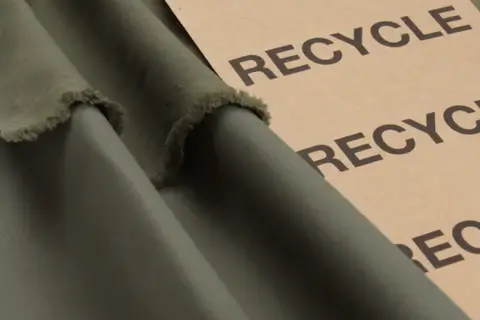
Pour avoir, nous avons adopté la durabilité dans notre fabrication de vêtements de sport, offrant des options de polyester recyclées, des mélanges de coton biologique et des solutions d'emballage respectueuses de l'environnement. Notre expérience a montré que la durabilité n'est pas seulement bonne pour la planète - elle est bonne pour les affaires. Permettez-moi de partager ce que nous avons appris sur l'analyse de rentabilisation convaincante des vêtements de sport durables.
Pourquoi la durabilité devient-elle impérative du marché?
Les préférences des consommateurs se déplacent considérablement vers des options durables. Les marques qui ne reconnaissent pas ce risque de tendance deviennent obsolètes car les alternatives de l'éco-conscience capturent la part de marché.
67% des consommateurs mondiaux disent qu'ils envisagent la durabilité lors de l'achat de vêtements de sport, et ce pourcentage passe à 73% parmi les milléniaux. Dans la catégorie Fitness and Wellness en particulier, 78% des consommateurs se préoccupent de l'impact environnemental de leurs achats, faisant de la durabilité un différenciateur clé dans les décisions d'achat.
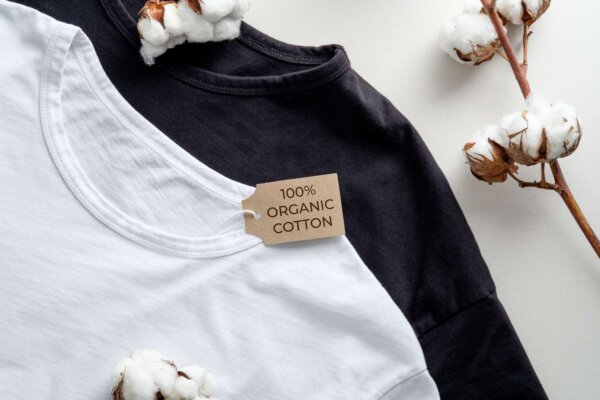
Lorsque nous avons commencé à fabriquer des vêtements de sport à l'avoir, la durabilité était considérée comme un argument de vente de niche. Aujourd'hui, c'est devenu une attente grand public, en particulier dans cette catégorie. Voici pourquoi la durabilité est devenue un impératif du marché:
Valeurs de consommation changeantes
Des études de marché récentes révèlent des changements spectaculaires dans les priorités des consommateurs:
| Tendance des consommateurs | Pourcentage | Implication commerciale |
|---|---|---|
| Prêt à payer plus pour les produits durables | 73% | Opportunité de prix premium |
| Considérer l'impact environnemental important dans les décisions d'achat | 67% | La durabilité comme avantage concurrentiel |
| Recherche activement des marques avec de fortes valeurs environnementales | 58% | Opportunité de fidélité à la marque |
| Ont changé de marques en fonction des préoccupations environnementales | 35% | Risque de perte de client s'il n'est pas abordé la durabilité |
Différences générationnelles
Les préférences de durabilité varient considérablement selon la génération:
- Gen Z (18-24): 83% croient que les entreprises devraient résoudre les problèmes environnementaux
- Milléniaux (25-40): 73% disent que les préoccupations environnementales ont un impact sur leurs décisions d'achat
- Gen X (41-56): 60% disposé à payer plus pour les produits durables
- Baby-boomers (57-75): 52% Comptez sur la durabilité dans les décisions d'achat
Les jeunes générations représentant le marché principal des vêtements de sport, leurs préférences de durabilité plus fortes sont particulièrement pertinentes pour cette catégorie.
Préoccupations spécifiques aux vêtements de sport
L'industrie des vêtements de sport fait face à un contrôle particulier:
- Les tissus synthétiques comme le polyester et le nylon sont à base de pétrole et non biodégradables
- Les processus de production peuvent être à forte intensité de l'eau
- Les approches de mode rapide ont conduit à des déchets excessifs
- Les consommateurs voient de plus en plus une déconnexion entre les produits axés sur le bien-être et les pratiques nocives de l'environnement
Ces préoccupations ont créé une opportunité de marché importante pour les marques qui peuvent aborder authentiquement la durabilité tout en maintenant les performances et le style.
Pour un aperçu complet du marché des vêtements de sport et des tendances des consommateurs, visitez notre analyse détaillée: Comprendre les vêtements actifs & Marché des vêtements de yoga: tendances, démographie & Opportunités pour les acheteurs B2B.
Quels sont les avantages financiers des vêtements de sport durables?
De nombreuses entreprises hésitent à investir dans la durabilité en raison des préoccupations concernant les coûts et les rendements. Comprendre l'analyse de rentabilisation complète aide à justifier ces investissements.
Le retour sur investissement pour les vêtements de sport durables passe par plusieurs canaux: potentiel de tarification premium (15-30% de prix plus élevé), augmentation de la fidélité des clients (27% de taux de rétention plus élevés pour les marques durables), une réputation accrue de la marque, des avantages de placement au détail et une réduction du risque de futurs problèmes de conformité réglementaire.
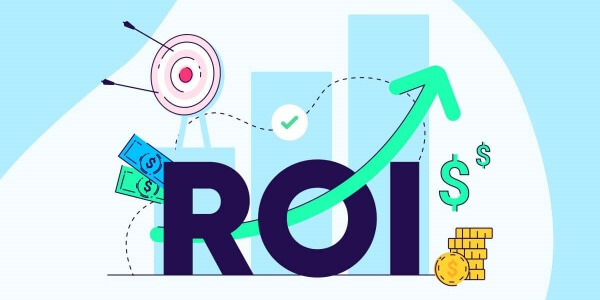
Pour avoir, nous avons vu de première main comment les investissements en durabilité offrent des rendements commerciaux tangibles. Voici l'analyse de rentabilisation complète:
Avantages financiers
Potentiel de tarification premium
Les études de marché montrent que les consommateurs paieront plus pour les produits durables:
- 73% paieront au moins 10% de plus pour les options durables
- 32% paieront 25% ou plus pour les produits avec de solides informations d'identification environnementales
- Dans les vêtements de sport en particulier, Sustainable Options commandez 15 à 30% de primes de prix
Augmentation du volume des ventes
La durabilité entraîne des décisions d'achat:
- 67% des consommateurs sont plus susceptibles d'acheter des produits clairement marqués comme respectueux de l'environnement
- Les marques de vêtements de sport durables voient généralement 15 à 25% de taux de conversion plus élevés
- Les détaillants déclarent 10 à 20% de taux de vente plus élevés pour les produits de vêtements de sport durables
Fidélité accrue de la clientèle
La durabilité établit des relations clients plus solides:
- Les marques avec de solides références de durabilité bénéficient de 27% de rétention de clientèle plus élevée
- 41% des consommateurs sont plus susceptibles de recommander des marques durables à des amis
- La valeur client à vie augmente d'environ 22% pour les produits durables
Amélioration de la valeur de la marque
Avantages de réputation
La durabilité renforce la perception globale de la marque:
- 64% des consommateurs (et 72% des milléniaux) ont une image plus positive de marques avec des engagements de durabilité éprouvés
- La couverture médiatique est de 2,5x plus susceptible pour les marques avec des histoires de durabilité authentiques
- Les taux d'engagement des médias sociaux sont 35% plus élevés pour le contenu des produits durables
Différenciation compétitive
Sur le marché des vêtements de sport de plus en plus encombrés:
- La durabilité crée une différenciation significative au-delà des fonctionnalités de base
- 52% des consommateurs tiennent compte de l'impact environnemental lors du choix entre des produits de vêtements de sport similaires
- Les références de durabilité aident à éviter les pressions sur les prix des produits de base
Avantages de placement au détail
Les principaux détaillants priorisent de plus en plus les produits durables:
- De nombreux détaillants ont établi des exigences de durabilité pour les nouveaux fournisseurs
- Le placement de vente au détail premium est souvent alloué à des options durables
- Certains détaillants offrent un support marketing spécifiquement pour les produits durables
Atténuation des risques
Conformité réglementaire
L'adoption proactive de la durabilité réduit les risques futurs:
- Les réglementations environnementales deviennent de plus en plus strictes à l'échelle mondiale
- L'adoption précoce empêche les changements forcés coûteux plus tard
- Certains marchés mettent en œuvre des lois sur la responsabilité des producteurs élargies
Protection contre les consommateurs
La durabilité protège contre la publicité négative:
- Les marques sans engagements environnementaux sont confrontés à un examen minutieux
- Les médias sociaux amplifient rapidement les préoccupations environnementales
- Les accusations de greenwashing peuvent causer des dommages importants à la marque
Pour des informations détaillées sur les stratégies de tarification et les marges bénéficiaires pour les vêtements de sport durables, explorez notre analyse: Maximiser votre ROI: Vêts actifs & Le yoga porte des prix en gros, des marges de vente au détail & Analyse de la rentabilité.
Quelles options de matériaux durables sont disponibles pour les vêtements de sport?
De nombreuses entreprises ignorent la gamme de matériaux durables maintenant disponibles pour les vêtements de sport. Comprendre ces options est essentiel pour prendre des décisions éclairées de développement de produits.
Les matériaux de vêtements de sport durables comprennent le polyester recyclé (fabriqué à partir de bouteilles en plastique post-consommation), du nylon recyclé (souvent à partir de filets de pêche et de déchets de tapis), de coton biologique (cultivé sans pesticides nocifs) et de tissus de performance naturelle innovants comme Lyocell à base d'eucalyptus. Chacun offre des caractéristiques de performance différentes et des avantages de durabilité.
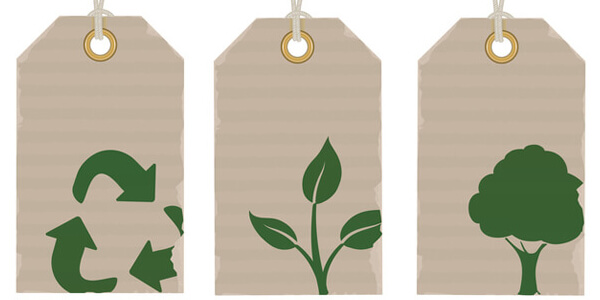
Pour avoir, nous avons développé des vêtements de sport en utilisant divers matériaux durables. Voici notre évaluation des options clés:
Matériaux synthétiques recyclés
Polyester recyclé
Avantages environnementaux:
- Détourne les bouteilles en plastique des décharges et des océans
- Nécessite 30 à 50% moins d'énergie que le polyester vierge
- Réduit la dépendance à l'égard du pétrole
- Produit 54% des émissions de carbone en moins que le polyester vierge
Caractéristiques de performance:
- Performance presque identique au polyester vierge
- Excellent coup de humidité
- Bonne durabilité et coloration
- Propriétés à séchage rapide
Considérations commerciales:
- 10-15% coûts primes par rapport au polyester vierge
- Histoire marketing solide (bouteilles à l'abri)
- Largement disponible en diverses qualités
- Peut être certifié via GRS (Global Recycled Standard)
Nylon recyclé
Avantages environnementaux:
- Souvent fabriqué à partir de filets de pêche, de déchets de tapis ou de déchets pré-consommés
- Réduit les déchets dans les océans et les décharges
- Nécessite 80% moins d'eau que le nylon vierge
- Produit 90% moins de co₂ que le nylon vierge
Caractéristiques de performance:
- Comparable au nylon vierge dans la plupart des propriétés
- Excellent étirement et récupération
- Soft Hand Feel
- Durable et résistant à l'abrasion
Considérations commerciales:
- 15-25% coûte la prime par rapport au nylon vierge
- Disponibilité limitée mais croissante
- Histoire particulièrement convaincante pour les déchets océaniques en nylon
- Peut être certifié via GRS
Matériaux naturels et semi-synthétiques
Coton biologique
Avantages environnementaux:
- Cultivé sans pesticides ou engrais synthétiques
- Utilise 88% moins d'eau que le coton conventionnel
- Favorise la santé et la biodiversité des sols
- Réduit l'exposition des agriculteurs à des produits chimiques nocifs
Caractéristiques de performance:
- Respirabilité et confort naturels
- Soft Hand Feel
- Propriétés hypoallergéniques
- Meilleur pour les activités d'intensité faible à modérée
Considérations commerciales:
- 20-30% de prix de coût par rapport au coton conventionnel
- Nécessite de mélanger avec l'élastane pour l'étirement
- Peut être certifié via GOTS (Global Organic Textile Standard)
- Souvent appel aux consommateurs à l'éco-conscience
Lyocell / Tencel
Avantages environnementaux:
- Fabriqué à partir de pâte de bois récoltée de manière durable
- Le processus de production en boucle fermée recycle 99% des solvants
- Matériau biodégradable
- Nécessite moins d'eau que le coton
Caractéristiques de performance:
- Gestion de l'humidité naturelle
- Texture lisse et soyeuse
- Respirant et régulant la température
- Inhibe naturellement la croissance bactérienne
Considérations commerciales:
- 15-25% coûte la prime par rapport aux tissus conventionnels
- Souvent mélangé avec d'autres fibres pour la performance
- Disponibilité et innovation croissantes
- Potentiel de positionnement de luxe
Tableau de comparaison des matériaux
| Matériel | Prime de coût | Niveau de performance | Meilleur pour |
|---|---|---|---|
| Polyester recyclé | 10-15% | Excellent | Activités de haute intensité, gestion de l'humidité |
| Nylon recyclé | 15-25% | Excellent | Yoga, activités de studio, pièces de compression |
| Mélanges de coton biologique | 20-30% | Bien | Activités à faible impact, peau sensible |
| Lyocell / Tencel | 15-25% | Très bien | Positionnement premium, régulation de la température |
Pour des informations détaillées sur les matériaux et la technologie de vêtements de sport, visitez notre guide complet: Vêts actifs & Technologie des vêtements de yoga & Matériaux: Guide de l'acheteur sur les tissus de performance, construction & Durabilité.
Comment mettre en œuvre une stratégie de vêtements de sport durable?
De nombreuses entreprises ont du mal à mettre en œuvre efficacement la durabilité. Sans approche stratégique, les efforts peuvent être fragmentés, inefficaces ou vulnérables aux accusations de greenwashing.
La mise en œuvre d'une stratégie de vêtements de sport durable réussie nécessite une approche progressive: effectuer une évaluation de la durabilité des produits actuels, identifier les domaines prioritaires d'amélioration, développer des objectifs de durabilité clairs, sélectionner des matériaux et processus appropriés, obtenir des certifications pertinentes et créer un marketing authentique qui évite le greenwashing.
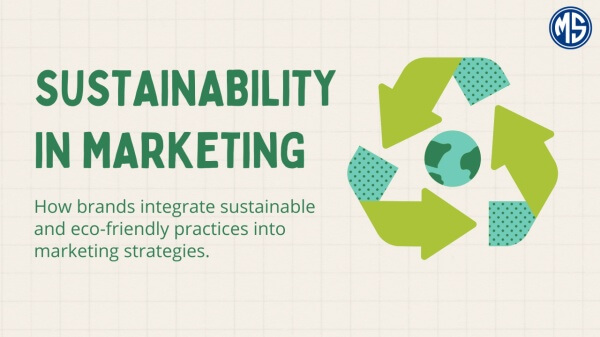
Pour avoir, nous aidons nos partenaires à développer et à mettre en œuvre des stratégies de durabilité efficaces. Voici notre approche recommandée:
Phase 1: Évaluation et définition des objectifs
Commencez par comprendre votre impact environnemental actuel:
- Évaluation du cycle de vie des produits: Évaluer l'impact environnemental sur l'ensemble du cycle de vie du produit
- Analyse des matériaux: Évaluer les matériaux actuels pour les problèmes de durabilité
- Cartographie de la chaîne d'approvisionnement: Identifier les points chauds environnementaux clés dans votre chaîne d'approvisionnement
- Benchmarking des concurrents: Comprendre ce que font les autres sur le marché
Fixez des objectifs de durabilité claires et mesurables:
- Cibles matérielles: e.g., "50% recycled content by 2024"
- Réduction du carbone: e.g., "30% reduction in carbon footprint by 2025"
- Réduction des déchets: e.g., "Zero waste to landfill from production by 2023"
- Conservation de l'eau: e.g., "40% reduction in water usage by 2024"
Phase 2: stratégie de mise en œuvre
Élaborer un plan de mise en œuvre progressif:
Substitution matérielle
- Commencez par les produits principaux: Commencez par vos best-sellers pour un impact maximal
- Approche hybride: Considérons les mélanges de matériaux durables et conventionnels comme transition
- Tests de performance: Assurez-vous que les alternatives durables répondent aux exigences de performance
- Analyse des coûts: Calculer le retour sur investissement, y compris les opportunités de primes de prix potentielles
Améliorations de la chaîne d'approvisionnement
- Sélection des partenaires de fabrication: Choisissez des partenaires avec les références de durabilité
- Optimisation du processus: Identifier les opportunités de réduction de l'eau et de l'énergie
- Efficacité du transport: Optimiser les méthodes d'expédition et l'emballage
- Réduction des déchets: Mettre en œuvre les programmes d'efficacité de coupe et de recyclage de ferraille
Stratégie de certification
- Identifier les certifications pertinentes: Sélectionnez des certifications qui correspondent à vos réclamations
- Développer des systèmes de documentation: Créer des processus pour suivre et vérifier les allégations de durabilité
- Vérification des tiers: Engagez une vérification indépendante des allégations de durabilité
- Amélioration continue: Planifier la maintenance et l'expansion des certifications en cours
Phase 3: marketing et communication
Développer une authentique messagerie de durabilité:
- Être précis: Utilisez des faits concrets plutôt que de vagues affirmations
- Être transparent: Reconnaître les zones encore améliorées
- Être éducatif: Aider les consommateurs à comprendre l'impact de leurs choix
- Évitez le greenwashing: Ne surestimez pas les avantages environnementaux
Canaux de communication efficaces:
- Étiquetage des produits: Des informations de durabilité claires sur les étiquettes et l'emballage
- Contenu du site Web: Section de durabilité dédiée avec des informations détaillées
- Réseaux sociaux: Mises à jour régulières sur les initiatives et les progrès de la durabilité
- Formation du personnel: S'assurer que les membres de l'équipe peuvent expliquer avec précision les caractéristiques de durabilité
Cadre de calcul du ROI
Lors de l'évaluation des investissements en durabilité, considérez ce cadre:
| Catégorie d'investissement | Augmentation typique des coûts | Retour potentiel | Période de récupération |
|---|---|---|---|
| Matériaux recyclés | 10-15% | 15-25% Prix Premium | Immédiat à 6 mois |
| Matières organiques | 20-30% | 20 à 30% de prix | Immédiat à 6 mois |
| Emballage durable | 5-15% | Amélioration de la conversion de 5 à 10% | 6-12 mois |
| Certification de durabilité | 2 000 à 10 000 $ par an | 10-20% ont augmenté le placement des détaillants | 6-18 mois |
Pour obtenir des conseils sur l'élaboration de votre propre ligne de vêtements de sport durable, visitez notre ressource détaillée: Votre marque, votre produit: le guide complet de la marque privée (OEM / ODM) & Fabrication de vêtements de yoga.
Conclusion
L'analyse de rentabilisation des vêtements de sport durables est convaincant et multiforme. Au-delà de la satisfaction croissante de la demande des consommateurs pour les produits respectueux de l'environnement, les initiatives de durabilité offrent des avantages commerciaux tangibles grâce à des opportunités de tarification supérieure, à une fidélité accrue de la clientèle, à une valeur de marque améliorée et à l'atténuation des risques.
Pour avoir, nous nous engageons à soutenir nos partenaires dans le développement de vêtements de sport vraiment durables qui offrent des avantages environnementaux et commerciaux. En adoptant la durabilité en tant que stratégie commerciale de base plutôt qu'en marketing après coup, les marques peuvent se positionner pour un succès à long terme sur ce marché en évolution rapide.
Pour un aperçu complet de l'ensemble de la catégorie des vêtements de sport, y compris les tendances du marché et les opportunités commerciales, visitez notre Guide ultime B2B de l'approvisionnement & Vendre des vêtements de sport & Usure de yoga.
Questions fréquemment posées (FAQ)
Quelle est la fonctionnalité de durabilité la plus importante pour les consommateurs de vêtements de sport?
Bien que les préférences varient selon le segment, la recherche montre que le contenu recyclé (en particulier le polyester recyclé à partir de bouteilles en plastique) est la caractéristique de durabilité la plus universellement appréciée, suivie d'une utilisation de l'eau et des matières organiques réduites.
Dans quelle mesure les consommateurs sont-ils prêts à payer pour des vêtements de sport durables?
Les études de marché indiquent que 73% des consommateurs paieront au moins 10% de plus pour les options durables, tandis que 32% paieront des primes de 25% ou plus pour les produits avec de fortes informations d'identification environnementales.
Quelles certifications de durabilité sont les plus précieuses pour les vêtements de sport?
GRS (Global Recycled Standard) est le plus précieux pour les réclamations de contenu recyclé, les GOT (Global Organic Textile Standard) pour les matériaux organiques et BlueSign® pour la production globale de l'environnement. Oeko-Tex Standard 100 offre une crédibilité de sécurité essentielle.
Comment les petites marques peuvent-elles rivaliser avec les grandes entreprises sur la durabilité?
Les petites marques peuvent souvent mettre en œuvre des initiatives de développement durable plus rapidement et authentiquement que les grandes entreprises. Concentrez-vous sur la communication transparente, les avantages environnementaux spécifiques et la création de relations authentiques avec les consommateurs soucieux de la durabilité.
Vaut-il mieux se concentrer sur les matériaux durables ou la fabrication durable?
Les deux sont importants, mais les matériaux durables ont généralement une visibilité des consommateurs et un impact marketing plus immédiats. Cependant, une approche complète portant sur les matériaux et les processus de fabrication crée le positionnement de durabilité le plus fort.
Comment éviter les accusations de greenwashing lors de la commercialisation des vêtements de sport durables?
Soyez précis sur les réclamations environnementales, fournissez des preuves et des certifications pour les sauvegarder, reconnaître que les domaines sont toujours améliorés et se concentrer sur les progrès plutôt que sur la perfection. La transparence sur votre parcours de durabilité renforce la crédibilité.
Obtenez un devis gratuit pour vos projets de vêtements de sport
